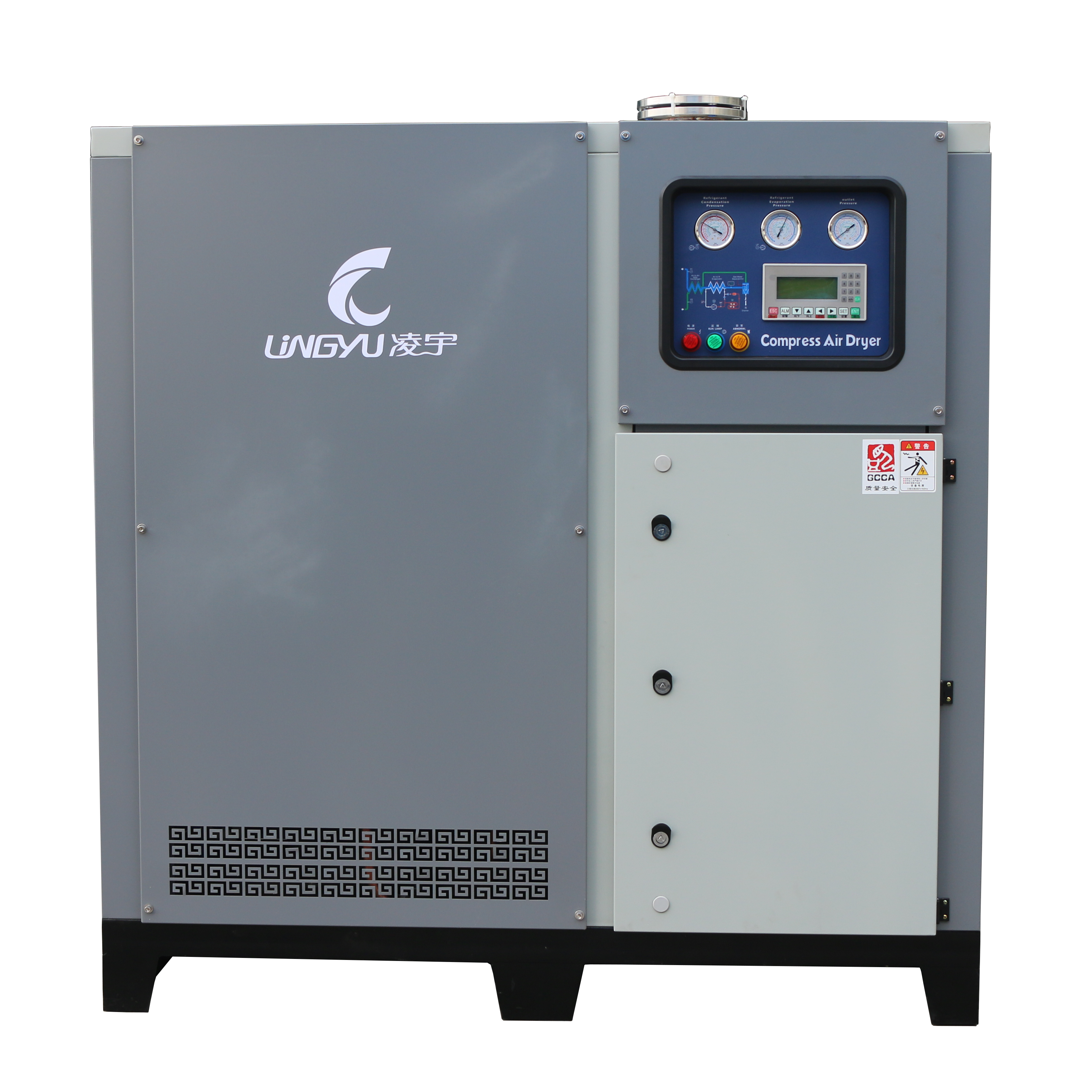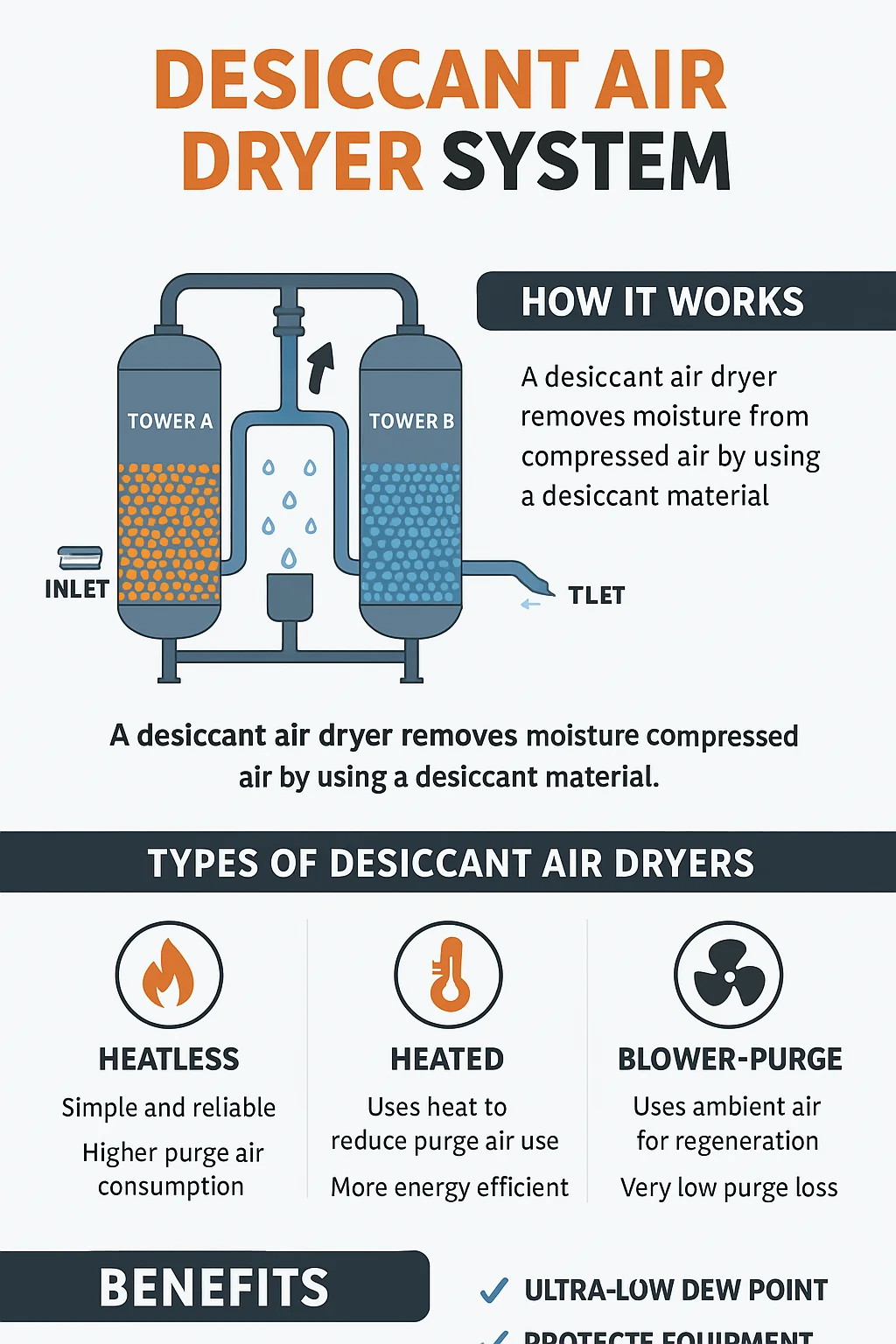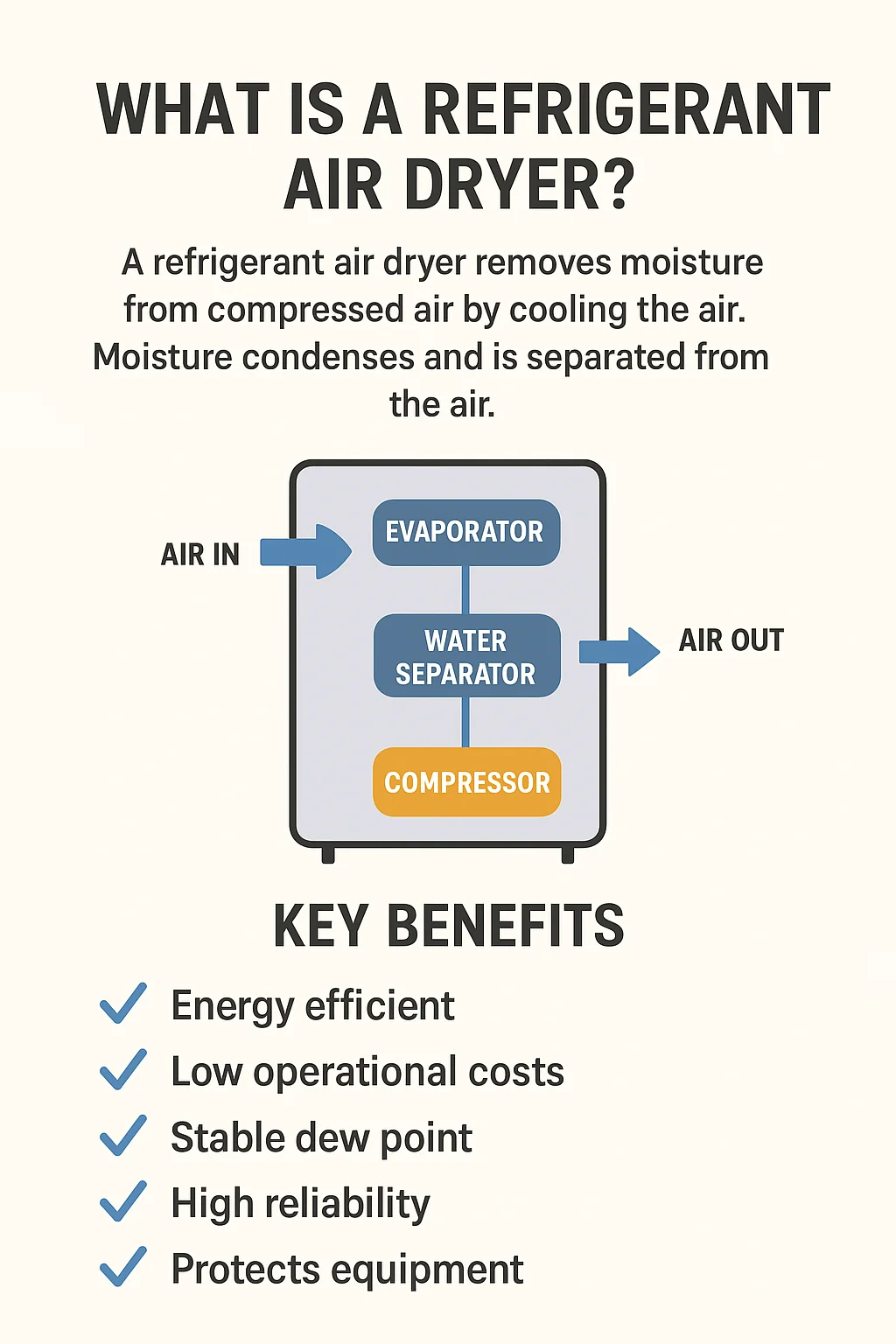Introduction to Plate Heat Exchanger Refrigerated Air Dryers
A plate heat exchanger refrigerated air dryer is a highly efficient and compact solution for drying compressed air in various industrial environments. It removes moisture from compressed air using a layered plate structure, significantly improving air quality and protecting downstream equipment.
Unlike traditional shell-and-tube or condenser-style dryers, the plate heat exchanger refrigerated air dryer leverages high-efficiency thermal transfer and compact design, making it ideal for space-constrained or high-demand applications.
How Does a Plate Heat Exchanger Refrigerated Air Dryer Work?
This type of air dryer consists of a series of thin plates arranged to create narrow flow paths. These plates act as heat exchangers between the warm, moisture-laden compressed air and the cold refrigerant.
When compressed air enters the plate heat exchanger refrigerated air dryer, it passes through the plate channels, where the refrigerant absorbs the heat and reduces the air’s temperature. This cooling process condenses the moisture into water, which is then separated and drained.
Key Advantages of Plate Heat Exchanger Refrigerated Air Dryers
1. Superior Energy Efficiency
Due to the high surface area of the plate structure, heat transfer is more efficient. This results in lower energy consumption compared to conventional air dryers.
2. Compact Footprint
Thanks to its integrated design, a plate heat exchanger refrigerated air dryer occupies significantly less space. This makes it suitable for factories or facilities with limited room for equipment.
3. Long Service Life and Reliability
With no moving parts inside the plate heat exchanger, these dryers are less prone to mechanical failure. This means longer operational life and reduced maintenance costs.
4. Corrosion Resistance and Durability
Many plate heat exchanger refrigerated air dryers are made of high-grade stainless steel or corrosion-resistant alloys. They are well-suited for harsh environments such as marine or chemical processing applications.
5. Stable Performance Under Harsh Conditions
They maintain high performance even under fluctuating temperatures, pressures, and humid conditions, making them ideal for mission-critical industries.
Applications of Plate Heat Exchanger Refrigerated Air Dryers
1. Pharmaceutical Industry
Clean, dry compressed air is vital in pharmaceutical production to prevent contamination and meet stringent hygiene standards.
2. Food & Beverage Processing
In food applications, the use of dry air is crucial to prevent spoilage or moisture-related damage. The compact design is also beneficial in cleanroom settings.
3. Electronics and Precision Manufacturing
Moisture in compressed air can damage sensitive electronic components. The plate heat exchanger refrigerated air dryer helps ensure optimal product quality.
4. Marine and Offshore Engineering
Harsh, corrosive environments like ship engines and offshore platforms require rugged, space-saving, corrosion-resistant air dryers.
5. Aerospace and Aviation
Aircraft manufacturing and testing processes require highly stable and dry air, which these dryers can reliably provide.
Why Choose a Plate Heat Exchanger Refrigerated Air Dryer?
The growing demand for energy-efficient, space-saving, and reliable equipment makes the plate heat exchanger refrigerated air dryer an increasingly popular choice. It combines technical excellence with robust construction and operational simplicity.
Benefits at a glance:
Saves energy and lowers operating costs
Fits tight installation spaces
Reduces maintenance and downtime
Performs reliably in extreme environments
Complies with industry standards for air quality
Frequently Asked Questions (FAQ)
What makes a plate heat exchanger refrigerated air dryer different from a traditional one?
Traditional dryers often use bulky shell-and-tube heat exchangers, while plate heat exchanger dryers use stacked metal plates for better efficiency and space-saving.
Can it be used in high-humidity environments?
Yes. These dryers are highly effective even in humid, corrosive, or offshore environments.
How do I choose the right capacity?
Sizing depends on compressed air flow (CFM), inlet temperature, operating pressure, and required dew point. Consult your supplier for proper selection.
Are these dryers easy to maintain?
Absolutely. With fewer moving parts and corrosion-resistant materials, maintenance is minimal compared to older systems.
Is it suitable for cleanroom environments?
Yes. Its stainless-steel construction and compact design make it perfect for cleanrooms in pharmaceutical and electronics sectors.
Conclusion
The plate heat exchanger refrigerated air dryer is a game-changing solution for industrial compressed air systems. Its compact size, excellent energy efficiency, long lifespan, and ability to withstand harsh environments make it ideal for a wide range of applications—from manufacturing to marine engineering.
Whether you’re upgrading your current system or planning a new installation, choosing a plate heat exchanger refrigerated air dryer is a smart move toward cleaner, drier, and more efficient compressed air delivery.
Related products:
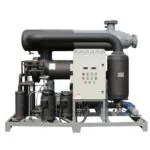
The 3885 CFM refrigerated air dryer (water cooled) is a high-capacity industrial solution designed for removing moisture from large-scale compressed air systems. Built for continuous and demanding operation, this water-cooled unit ensures a steady dew point and maximum system protection. Whether you're operating in petrochemical, steel, manufacturing, or pharmaceutical industries, the 3885 CFM refrigerated air dryer delivers superior drying performance and energy efficiency.
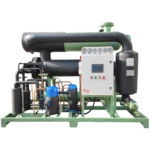
The 4238 CFM refrigerated air dryer (water cooled) is a high-capacity, industrial-grade dryer designed to eliminate moisture from large compressed air systems. Built with a powerful water-cooled refrigeration circuit, this dryer ensures reliable and continuous moisture removal with a stable pressure dew point. For industries that demand high airflow rates and dependable air quality, the 4238 CFM refrigerated air dryer (water cooled) is the ideal solution.
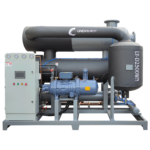
The 8830 CFM refrigerated air dryer (water cooled) is a top-tier industrial solution engineered to remove moisture from large-scale compressed air systems. Built for ultra-high capacity applications, this dryer ensures consistently dry air with a stable dew point and superior thermal control using an advanced water-cooled condenser system.

